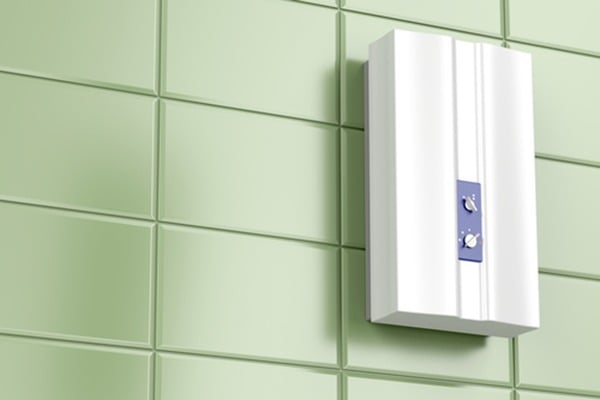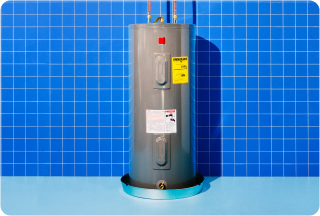Make Your Dream of Instant Hot Water in Your Home a Reality

No ones likes getting splashed with cold water during the winter. Learn how to get hot water faster and how this affects your heating and plumbing.


No ones likes getting splashed with cold water during the winter. Learn how to get hot water faster and how this affects your heating and plumbing.
Do you ever find yourself wondering how to get hot water faster? In the chilly winter months, waiting for the tap to deliver hot water can seem like an eternity. But you may be surprised to learn that, even with a standard tank water heater, you can have instant hot water in your home — or something very close to it. Let's explore your options for getting instant hot water at home.
Hot Water Recirculation Pump
One way to instantly get hot water is with a hot water recirculation pump. This innovative device delivers hot water to your faucet without the wait. Here’s how it works.
When you turn off the hot water tap in most homes, the hot water remaining in the pipes eventually cools down. When you reopen the tap, you drain that cooled water until a fresh supply of hot water reaches the faucet. The process can take several minutes and can waste a significant amount of water, heat energy and time.
With a recirculation or booster pump mounted near your faucet, the hot water that has cooled is sent back to your water heater and quickly replaced with a fresh supply of hot water. Now, when you turn on the hot water tap, you get near-instantaneous hot water. Recirculation pump-equipped plumbing systems can reduce your hot water wait times by between 60 and 80 percent.
A variation of the faucet recirculation pump is the water heater-mounted unit. These models contain a 120-volt pump and a timer that is connected to the hot water line. At preset times, the recirculation pump turns on (using about the same power as a 25-watt lightbulb) and keeps the hot water circulating, making it immediately available at the tap.
Finally, electronic recirculation pumps also rely on an electric pump. However, these models add digital controls and a thermostat-controlled zone valve to achieve peak efficiency. Electronic recirculation pumps can be activated by a push button, remote control or even a motion detector.
Learn how a protection plan can help with covered water heater breakdowns.

Point-Of-Use Tankless Water Heater
If you want to get hot water faster, a point-of-use tankless heater is another option to consider. These small units usually fit inside a sink cabinet or closet. They work much like whole-house tankless units but are intended to serve only one sink or shower. They are far less expensive than whole-house models and are a good option when your standard water heater doesn’t have the capacity to simultaneously meet all your household's hot water needs.
Related: What to Know Before Installing a Tankless Water Heater
Structured Plumbing For Instant Hot Water At Home
Another way to get hot water faster, especially in newer homes, is structured plumbing. In a structured plumbing scenario, your water heater is situated at the center of the house rather than in your garage or basement. Whenever you need hot water, you simply switch on the hot water pump. A one-inch main hot water line runs through the home, never more than 10 feet from any faucet, and is connected to your faucets with a pipe measuring three-eighths of an inch in diameter. The larger main line means a shorter wait for hot water when the pump is activated, and the smaller branches mean that less water runs down the drain while you're waiting for hot water.
Whichever instant hot water option you choose, you could end up conserving as much as 11,000 to 16,000 gallons of water each year. Moreover, by speeding up the delivery of hot water, you're likely to see a positive difference in your utility bills. Heating water to wash dishes, do laundry, shower, and bathe accounts for 12 percent of the average American household's total energy expenses.
Upgrades to your home's plumbing and heating systems are an investment, and therefore worth protecting. Be sure to perform the manufacturer's recommended preventive maintenance on your systems and their components, and have any necessary repairs made quickly by a qualified professional. To further minimize the costs associated with the repair and replacement of your home's heating and plumbing equipment, consider purchasing a home warranty with American Home Shield. Our flexible pricing and expert contractors can help you safeguard your home, as well as your household budget.
AHS assumes no responsibility, and specifically disclaims all liability, for your use of any and all information contained herein.
Have a plan for your home when things don't go according to plan
Shop Home Warranties